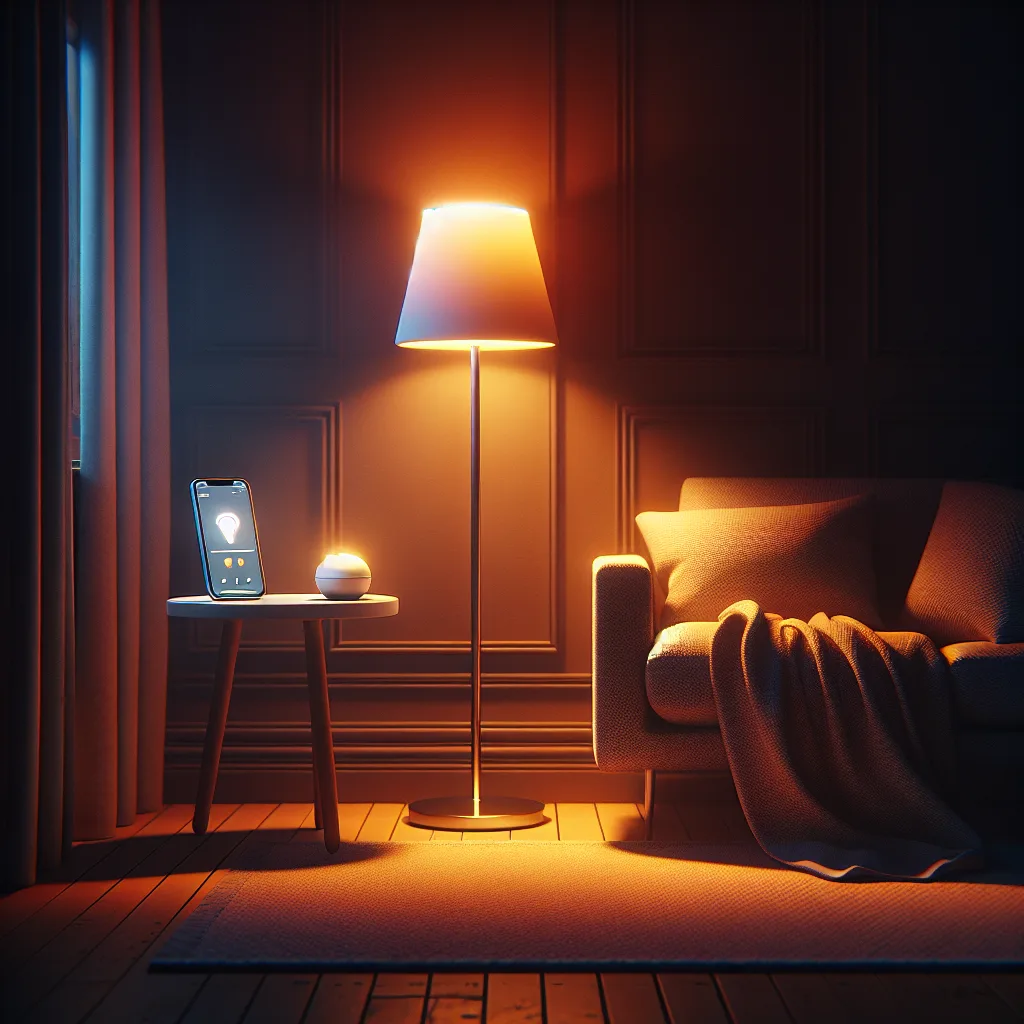Tired of cold, sterile smart lights? Learn how to make your smart bulbs automatically get warmer as they dim, creating a cozy, incandescent-like glow.
There’s something incredibly cozy about a classic, old-school light bulb. As you dim it down, it doesn’t just get fainter; it gets warmer. The light shifts from a bright, functional white to a deep, calming, almost candle-like orange. It’s the perfect light for winding down at the end of the day.
But if you’ve switched to smart bulbs, you might have noticed something missing. When you dim most of them, they just get less bright. The color of the light stays the same, resulting in a dim, grayish, and sometimes sterile-feeling room. It’s just not the same.
So, can you get that classic “warm glow” effect from a modern smart bulb? The kind where the light automatically gets warmer as the brightness goes down?
Yes, you absolutely can. Here’s how to do it.
Why Most Smart Bulbs Don’t Do This Automatically
First, it helps to know why this happens. Your smart bulb manages two things separately:
- Brightness (Luminance): This is simply how bright or dim the light is. It’s a percentage, from 0% to 100%.
- Color Temperature: This is how warm (orangey) or cool (bluish) the light is. It’s measured in Kelvin (K). A low Kelvin value (like 2200K) is very warm, while a high one (like 5000K) is cool, like daylight.
Most smart bulbs treat these as two independent sliders in their app. When you tell your voice assistant to “dim the lights to 20%,” it only adjusts the brightness slider, leaving the color temperature untouched. The result is a dim but still-cool light.
The Fix: Linking Brightness and Warmth
To get that classic effect, you need to link these two settings. As brightness goes down, you want the color temperature to go down, too. Here are a few ways to achieve this, from simple to more advanced.
1. The “Good Enough” Method: Using Scenes
This is the most straightforward approach and works with almost any color-tunable smart bulb, like those from Philips Hue, Wyze, or LIFX. Instead of dimming manually, you create a few pre-set “scenes” for different moods.
For example, you could create:
- “Focus” Scene: 100% brightness at a neutral 3500K.
- “Relax” Scene: 70% brightness at a softer 2700K.
- “Cozy” Scene: 30% brightness at a very warm 2200K.
It’s not a perfect, smooth transition, but it’s a massive improvement. You can just ask your voice assistant to “set the Cozy scene,” and you get the right vibe instantly. The only downside is that it takes a bit of trial and error to get the brightness and color combinations just right.
2. The Easy Way: Buy a “Warm Dim” Smart Bulb
Some companies have already solved this problem for you. A growing number of smart bulbs now have this feature built-in. They are often marketed with terms like “Dim to Warm” or “Warm Glow.”
Philips Hue offers this in many of their White Ambiance bulbs. When you pair them with a Hue Dimmer Switch or use the app, they can be configured to automatically warm as they dim. It’s incredibly smooth and works just like a classic incandescent.
Other brands are catching on, too. When you’re shopping for new bulbs, keep an eye out for this feature on the box or in the product description. It’s the simplest, “it just works” solution.
3. The Power User Method: Custom Automation
If you’re a bit more tech-savvy and use a smart home hub like Home Assistant or SmartThings, you can build this functionality yourself. This method gives you the most control.
In these platforms, you can create an automation rule that essentially says:
“When the brightness of Living Room Lamp changes, automatically adjust its color temperature.”
You can create a precise formula, mapping specific brightness levels to exact Kelvin values. For example:
- If brightness is 80-100%, set color to 3000K.
- If brightness is 60-79%, set color to 2700K.
- If brightness is 40-59%, set color to 2500K.
- And so on…
This gives you that perfectly smooth, continuous dimming transition you’re looking for. It takes some initial setup but is a fantastic solution if you already have a smart home hub.
Bringing Back the Coziness
I went through this exact journey in my own home. I started with scenes, which were fine for a while. But what I really wanted was that seamless, automatic warmth for movie nights. I eventually invested in a couple of Philips Hue White Ambiance bulbs for the main lamps in my living room, and it made all the difference.
So don’t settle for sterile, dim light. You can have the convenience of smart lighting and the cozy comfort of a classic bulb. It just takes a little bit of smart configuration.
